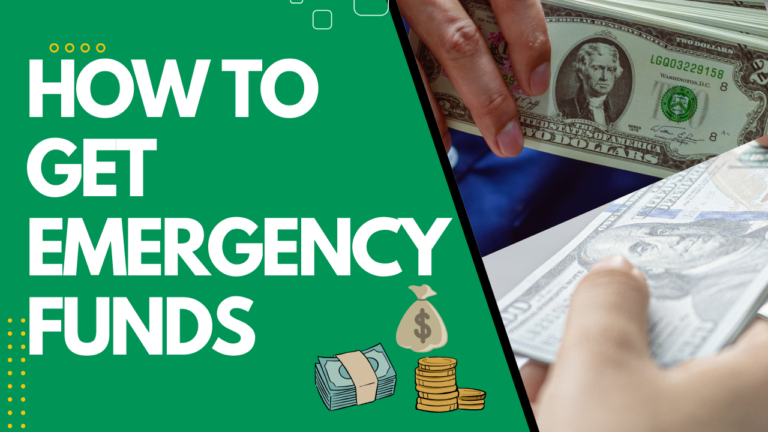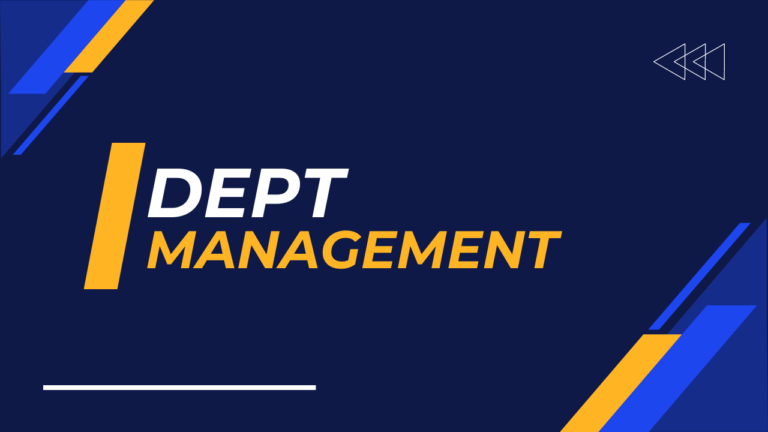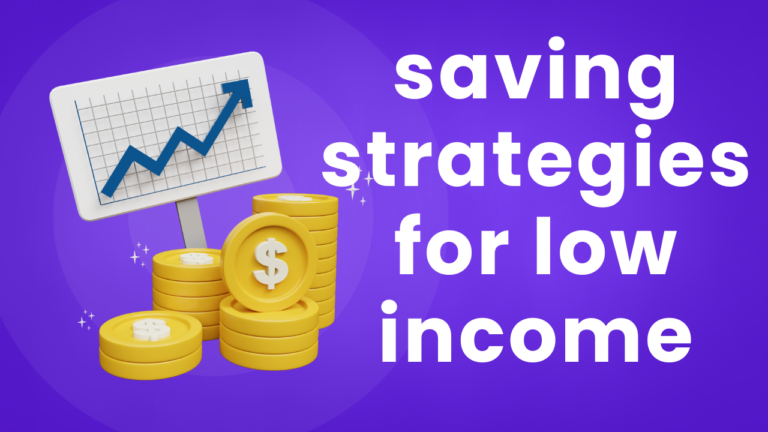Introduction to Credit Companies
Gating the world of credit can be daunting, especially with so many options available. As we step into 2024, understanding which credit companies stand out is crucial. Whether you’re looking to build your credit score, maximize rewards and benefits, or secure low-interest loans, making an informed choice can set you on a path to financial success.
Credit companies play a pivotal role in shaping your financial future. They provide not just access to funds but also various tools and resources that can help improve your credit profile over time. But how do you know which ones are worth your attention? That’s where this guide comes into play!
Let’s explore the best credit companies for 2024 and discover what makes them leaders in the industry. From enhancing your potential score improvement through innovative features to providing tailored plans suited for different needs—there’s something here for everyone seeking better financial health!
Factors to Consider when Choosing a Credit Company
Choosing a credit company requires careful thought. Start by evaluating your financial needs. Are you looking to build your credit score or earn rewards?
Interest rates play a significant role as well. A lower rate can save you money in the long run, especially if you plan to carry a balance.
Next, consider fees associated with the account. Look for hidden charges that could add up over time.
Customer support is another crucial aspect. Responsive service can make all the difference when issues arise.
Review additional features like online tools and mobile apps. These resources can help track spending and improve your potential score improvement through interactive simulators or hacks tailored to boost your credit health efficiently.
Top 5 Credit Companies for 2024
When it comes to selecting the best credit companies for 2024, several options stand out. Each offers unique benefits tailored to different financial needs.
First up is **Company A**, renowned for its robust rewards program. Customers enjoy cashback on everyday purchases, making it an attractive choice for those who want to maximize their spending.
**Company B** focuses on helping individuals with low credit scores. With flexible terms and a user-friendly application process, they make accessing credit easier than ever.
Next, we have **Company C**, which boasts some of the lowest interest rates in the market. This is ideal for borrowers looking to save money over time.
For those seeking comprehensive customer support, **Company D** stands out with its personalized assistance and educational resources designed to improve your financial literacy.
Lastly, **Company E** offers innovative tools like a free credit score improvement simulator that helps users strategize better borrowing decisions.
A. Company 1: Benefits and Features
Company 1 stands out with its innovative approach to credit solutions. They offer a seamless online application process that makes it easy for users to get started.
One of the key benefits is their free credit score improvement simulator. This tool helps users visualize potential changes in their scores based on different actions, making it easier to strategize improvements.
Additionally, Company 1 provides tailored credit score improvement plans. These plans are designed to meet individual needs and focus on specific areas for growth.
Their customer support is notable as well, offering personalized guidance through every step. Users can access resources and expert advice whenever needed.
Another attractive feature includes competitive rewards programs tied to responsible usage. Customers earn points that can be redeemed for various perks while they build their credit history effectively.
B. Company 2: Benefits and Features
Company 2 stands out in the credit industry with its user-friendly platform and exceptional customer service. Their intuitive app allows users to track spending, manage payments, and monitor their credit score effortlessly.
One of the most attractive benefits is their rewards program. Users earn points for every purchase, which can be redeemed for travel, cash back, or gift cards. This feature makes it easier to leverage everyday expenses into tangible savings.
Additionally, Company 2 offers flexible payment options that cater to individual financial situations. This flexibility can help alleviate stress around monthly budgets while ensuring timely payments boost your potential score improvement on your credit report.
With a focus on education and support, they provide access to free resources such as a credit score improvement simulator. This tool empowers clients by showing how different actions may impact their scores over time—an invaluable asset for anyone looking to enhance their financial health.
C. Company 3: Benefits and Features
Company 3 stands out for its commitment to customer satisfaction and transparency. They offer a user-friendly interface that makes navigating your credit options simple and straightforward.
One of the key benefits is their educational resources. Users can access webinars, articles, and tools designed to enhance understanding of credit scores. This knowledge empowers customers to make informed decisions about their financial futures.
Additionally, Company 3 boasts competitive interest rates on loans, which can be particularly beneficial for those seeking home improvement loans with a low credit score. Such features enable users to improve their potential score while managing costs effectively.
Their mobile app is another highlight. It provides real-time updates on accounts and personalized tips through a free credit score improvement simulator—perfect for tracking progress over time without any hassle or confusion.
D. Company 4: Benefits and Features
Company 4 stands out for its impressive rewards program tailored to enhance user experience. With every purchase, customers earn points that can be redeemed for travel, merchandise, or cashback. This enticing feature encourages responsible spending while maximizing benefits.
Another notable aspect is the company’s flexible payment options. Customers can choose from various plans that suit their financial situations best, making it easier to manage expenses without feeling overwhelmed.
Security features are also top-notch. Advanced encryption keeps personal information safe from prying eyes and fraud attempts.
Customer service receives high marks as well. Support representatives are available around the clock through multiple channels, ensuring assistance when needed most.
Company 4 offers tools like a free credit score improvement simulator to help users visualize how their actions impact their scores over time. This empowers clients with knowledge and strategies for improvement.
E. Company 5: Benefits and Features
Company 5 stands out in the competitive credit landscape. They offer an innovative mobile app that allows users to track their spending and manage payments seamlessly.
Their rewards program is particularly impressive. Users can earn points for every dollar spent, which can be redeemed for travel, cash back, or merchandise. This flexibility makes it appealing for a wide range of consumers.
Another notable feature is their customer service support. With 24/7 assistance available through multiple channels, getting help is easy and convenient.
Additionally, Company 5 has low fees associated with its credit services. There are no hidden charges, ensuring transparency throughout the user experience.
For those concerned about building their credit score, they provide personalized advice and tools designed to facilitate improvement over time. Using a free credit score improvement simulator within their platform further enhances this process.
Tips for Building Your Credit Score with a Credit Company
Building your credit score can seem daunting, but small steps make a significant impact. First, always pay your bills on time. Late payments can severely damage your score.
Next, consider using a credit card regularly and keep the balance below 30% of its limit. This practice demonstrates responsible borrowing habits to lenders.
Don’t hesitate to check your free credit score improvement simulator frequently. It helps you understand where you stand and what improvements are possible.
Another effective strategy is diversifying your credit mix. Having different types of accounts—like installment loans or revolving credit—can boost your score over time.
Monitor any changes in your report carefully. Mistakes happen; disputing inaccuracies quickly can save you points that may affect loan approvals later on.
What are Credit Companies?
Credit companies are financial institutions that offer various products and services related to credit. They play a vital role in the economy by providing consumers with access to loans, credit cards, and other financing options.
These companies assess an individual’s creditworthiness based on their credit history. This evaluation influences the terms of any loan or line of credit offered.
Different types of credit companies exist. Some focus on personal loans, while others specialize in mortgages, business loans, or revolving lines of credit. Their offerings can cater to a wide range of consumer needs.
Many also provide tools for improving your financial health. Services such as free consultations help customers understand their potential score improvement through tailored strategies.
Consumers often seek reputable firms known for transparency and customer service. Understanding what these companies do is essential when navigating your financial journey.
The Top Factors to Consider When Choosing a Credit Company
Choosing the right credit company can significantly impact your financial health. Start by evaluating their interest rates. Low rates can save you money over time, making them essential for long-term commitments.
Next, consider fees associated with the credit products. Hidden charges can add up quickly and affect your overall experience. Transparency is key here.
Look at customer service ratings as well. A responsive support team can make resolving issues much smoother when they arise.
Additionally, examine the range of services offered. Some companies provide tools like a free credit score improvement simulator or a dedicated app for tracking progress.
Think about eligibility requirements and how they align with your current financial situation. Understanding these factors will guide you to the best options tailored to your needs while maximizing potential score improvements on your report.
Best Credit Companies for Building Credit
When it comes to building your credit, selecting the right company can make a significant difference. Look for companies that report to all three major credit bureaus—Equifax, Experian, and TransUnion. This ensures every payment you make is recorded.
Some excellent options are secured credit cards from reputable banks. They require a deposit but offer great rewards for responsible usage.
Another smart choice is credit-builder loans. These allow you to borrow small amounts while making regular payments, boosting your score over time.
Consider companies with educational resources too. Many provide free tools and simulators to track improvements in your potential score improvement on your credit report.
In today’s competitive landscape, choose a company that aligns with your financial goals while also helping elevate your financial literacy along the way.
Best Credit Companies for Rewards and Benefits
When it comes to maximizing your spending, rewards and benefits from credit companies can make a significant difference. Many consumers are looking for options that not only help them manage their finances but also provide tangible perks.
Companies like Chase Sapphire Preferred stand out with their lucrative points system. Earn points on every purchase that can be redeemed for travel, dining, or cash back.
Another excellent choice is the Discover It Cash Back card. This option offers rotating categories where users earn higher cashback percentages—a great way to benefit from everyday expenses.
American Express Gold Card is perfect for food lovers, providing generous rewards at restaurants and grocery stores. The annual fee may seem steep, but the savings in rewards often outweigh this cost.
Capital One Venture Rewards Credit Card entices travelers with double miles on every transaction. These miles can easily add up towards free flights or hotel stays—ideal for those who frequently jet off.
Best Credit Companies for Low Interest Rates and Fees
When searching for credit companies, low interest rates and minimal fees are paramount. These features can save you significant money over time.
Some companies excel in providing competitive rates that cater to individuals looking to improve their financial standing without breaking the bank. Lower interest means more of your payments go toward the principal balance rather than hefty charges.
Additionally, certain credit companies offer transparent fee structures, ensuring no hidden surprises lurk in your statements. This clarity is vital for managing finances effectively.
Look for firms with a strong reputation for customer service as well; they often provide guidance on how to maintain lower rates through responsible usage and timely payments.
By prioritizing these factors, you set yourself up for a healthier credit journey while enjoying greater peace of mind regarding your financial choices.
Alternative Options to Traditional Credit Companies
When traditional credit companies don’t meet your needs, there are other avenues to explore. Peer-to-peer lending platforms are gaining popularity. Here, individuals lend money directly to others, often at competitive rates.
Credit unions also offer a more personalized approach compared to big banks. They typically have lower fees and better interest rates for their members.
Another option is using secured credit cards. These require a cash deposit that acts as your credit limit. This method helps those with low credit scores build or improve their standing over time.
Consider community development financial institutions (CDFIs). They focus on promoting economic growth in underserved communities and can provide loans even if you have a low credit score.
Exploring these alternatives can lead to unique opportunities tailored to your financial situation.
Conclusion
When navigating the world of credit companies, it’s essential to choose wisely. The right company can help you build your credit score and open doors to new financial opportunities. Understanding the various benefits they offer—like rewards programs or low-interest rates—puts you in a stronger position.
Consider factors such as fees, customer service, and additional resources like simulations for potential score improvement on your credit report. Tools like free credit score improvement simulators can provide valuable insights into managing your finances effectively.
Whether you’re looking for best practices in building your credit or exploring alternative options outside traditional companies, staying informed is key. A solid understanding of what each company brings to the table empowers you to make choices that align with your financial goals.
As 2024 unfolds, keep these considerations at the forefront of your mind while seeking out ways to enhance your financial future through effective credit management strategies. With diligence and research, you’ll find a path that suits both current needs and long-term aspirations.








